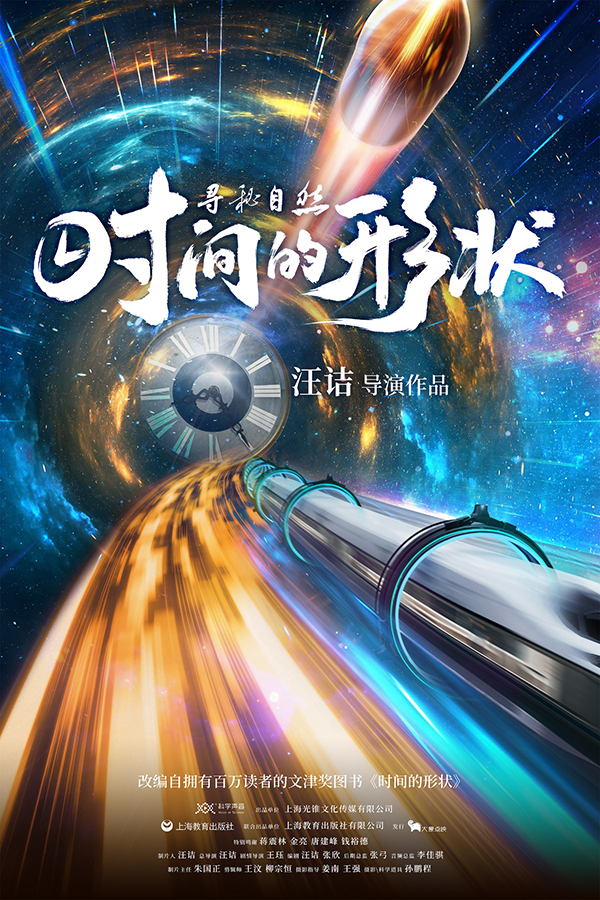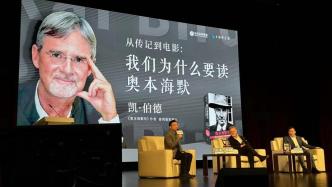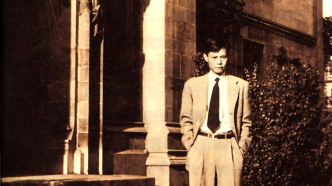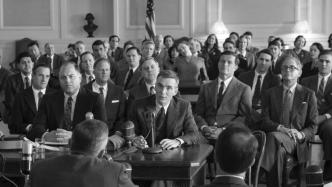
Christopher Nolan's movies have always been famous for their brain-burning, such as the previous "Memento", "Inception", "Dunkirk", and especially "Tenet". The order of the timeline tells you the story, and he likes to play tricks on the narrative structure. Therefore, Nolan's films are often not so easy to understand.
However, it is not difficult to understand the film "Oppenheimer" because it is not a fictional story, but a biographical film with a high degree of restoration and is basically faithful to history. Therefore, if you have a framework understanding of the real historical context and grasp the overall structure of the film's narrative structure, it will not be difficult to understand.
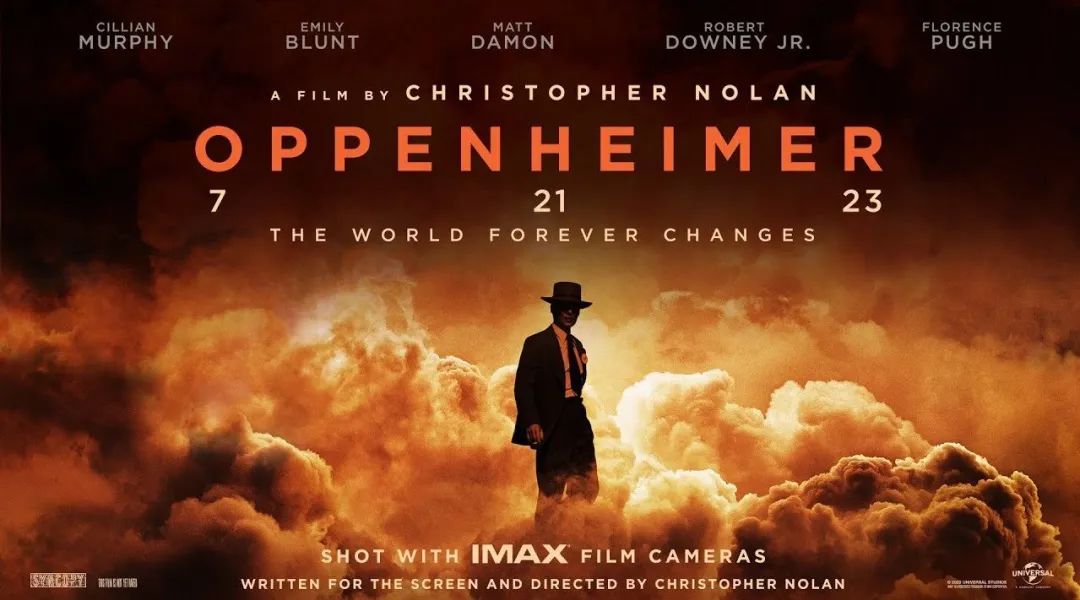
"Oppenheimer" movie poster.
Let me sort out the real history for you first. It is enough to understand a few key historical nodes in advance .
11 background knowledge to understand "Oppenheimer"
1. Oppenheimer was born in the United States in 1904 and is of German Jewish descent. Many famous physicists in the 20th century were Jews, such as the well-known Einstein. In the film, Oppenheimer went to meet Einstein, and they seemed very familiar with each other because they were both German Jews. There are also Feynman, Dyson, Eugene Wigner, etc., these great physicists are all Jews.
2. Oppenheimer graduated from Harvard University in the United States, and then studied at the University of Cambridge in the United Kingdom and the University of Göttingen in Germany from 1924 to 1927. While in Germany, he studied under the famous physics master Born. At that time, the center of the world's physics research was in Europe. The famous physicists we are familiar with were basically in the same circle. They were either teachers and students, classmates, or alumni. The friendship of the last friend. Therefore, whether in Germany or the United States at that time, the scientists who built the atomic bomb were inextricably linked.
3. In 1938, two German physicists successfully verified nuclear fission, which became the biggest news in the physics world at that time. The reason why this news was so sensational was because the world situation at that time was already very tense, and a world war was about to break out. As soon as physicists see the huge energy released by nuclear fission, they immediately understand that this thing can be made into bombs and used in the military.
4. In 1939, Germany raided Poland and World War II broke out. The world was divided into two camps, the fascist camp and the anti-fascist alliance. Humanity is divided into two, each fighting for itself. Countless teachers, students, classmates, and alumni have since become enemies. Germany and the United States also started a war for scientists. At that time, almost every famous scientist was named by both sides. Hitler's strategy was very cruel. If he can't be used by me, he would be eliminated. As a result, many escape stories happened during this period. The most thrilling thing was Bohr's escape, which I will talk about later.
5. Almost the same year that World War II broke out, Nazi Germany launched an atomic bomb development program in 1939, code-named "Uranium Club". The leading scientist was the famous Heisenberg.
6. In 1939, a group of physicists in the United States realized that if the Nazis were allowed to develop the atomic bomb first, the consequences would be disastrous. So, led by the physicist Szilard, many physicists jointly petitioned US President Roosevelt to build an atomic bomb before the Nazis. At that time, Einstein also signed the letter written by Szilard to Roosevelt. It is said that Einstein's signature had a great influence on Roosevelt. In October of that year, Roosevelt formally approved the atomic bomb contingency plan, which later became known as the "Manhattan Project."
7. The Manhattan Project actually had two leaders. One was General Grove, who represented the military and was responsible for non-scientific work such as base construction, logistics support, and security. The scientific work was led by Oppenheimer. The number of participants increased from the initial few hundred to more than 6,000.
8. When the Manhattan Project was established, it mainly targeted Germany. Oppenheimer’s direct competitor was also Germany’s Heisenberg. But what I didn't expect was that on the eve of the successful development of the atomic bomb, that is, two months before the first successful test explosion, Germany surrendered in May 1945. With the imaginary enemy of the Manhattan Project gone, scientists began to debate whether it was still necessary to continue unleashing the fires of hell. In the end, Oppenheimer convinced the scientists that since Japan had not surrendered, the development of the atomic bomb continued.
9.On July 16, 1945, the Manhattan Project successfully tested a nuclear bomb for the first time. Years later, Oppenheimer recalled in a television broadcast: The moment the fireball appeared, I remembered a sentence from the Bhagavad Gita: I am now Death, the destroyer of worlds.
10. After Japan surrendered and World War II ended, the Cold War between the United States and the Soviet Union began, and McCarthyism began to rise in the United States. A group of American far-right elements, led by Senator McCarthy, began to maliciously slander and persecute Americans suspected of being communists. It's a blot on American history. Oppenheimer's sister, brother, and lover were all members of the American Communist Party. A scientist in the Manhattan Project was also confirmed to be a Soviet spy. Therefore, Oppenheimer was also suspected.
11. Lewis Strauss, chairman of the U.S. Atomic Energy Commission, stood on the opposite side of Oppenheimer. He tried to force Oppenheimer to resign, but Oppenheimer did not give in. Instead, he chose to accept a congressional hearing to testify against him. Hearing inquiry. Although a congressional hearing is not a court trial, it is no less serious than a court. Those who receive the hearing or all those who testify must swear an oath to be honest. Perjury is a felony. Starting in April 1954, the hearings lasted for three months. Most of the scientists who worked with him testified in favor of Oppenheimer, but another famous scientist, Taylor, testified against Oppenheimer. Taylor also angered the scientific community and did not receive good treatment. reputation.
Well, after understanding the 11 pieces of background knowledge summarized above, it is almost enough to understand this film. In addition, I also need to tell you about the overall narrative structure of this film.
The film begins with a congressional hearing in 1954 and continues throughout the film. During the course of the hearing, various flashbacks and interludes are inserted. If you don’t understand the historical knowledge I mentioned earlier, it will be really easy to get confused. But if you have a framework understanding of history, it is easy to understand.
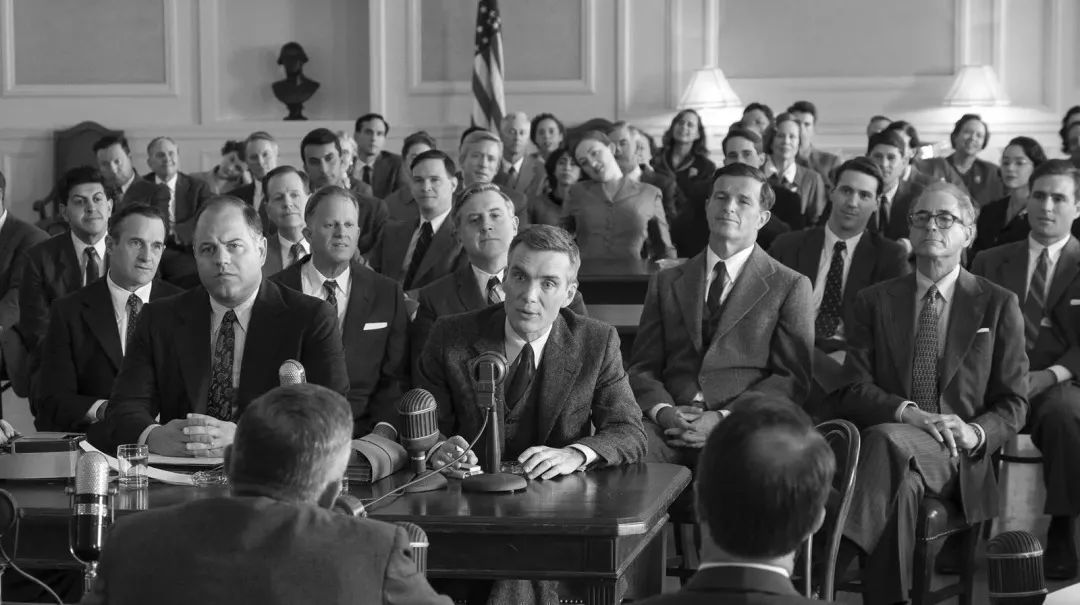
"Oppenheimer" stills
There is one detail that needs to be specially reminded. Black and white shots are inserted from time to time in the film, which may make the audience feel very strange. In fact, this is what Nolan thoughtfully did to help the audience better understand the plot. These black-and-white shots represent the opposite of Oppenheimer, the memory of Strauss.
We all know that for the same thing, different people may have different memories, which is the so-called Rashomon phenomenon. In this movie, there is also such a Rashomon phenomenon. There was one time when Strauss accompanied Oppenheimer to meet Einstein. This was a relatively critical scene and the starting point of the conflict between the two. They had different memories. Therefore, this scene was shown many times in the film. In order to make it easier for the audience to understand, Nolan processed the scenes of Strauss's memories into black and white, while Oppenheimer's memories were in color. If If it is not handled in this way, I guess this scene will make most people really not understand.
I'm done talking about the movie itself. Let me tell you something more interesting.
Heisenberg Mystery
1.Germany’s Uranium Club
Surrounding the scientific history of the development of atomic bombs by the United States and the United States, there is a mystery of great interest to historians, that is, why the German scientific research team led by Heisenberg did not develop the atomic bomb before the Americans.
You know, the Germans started working on the atomic bomb development project in 1939 before the Americans. They organized a luxurious team consisting of nearly 100 scientists to implement the plan to develop the atomic bomb, code-named "Uranium Club."
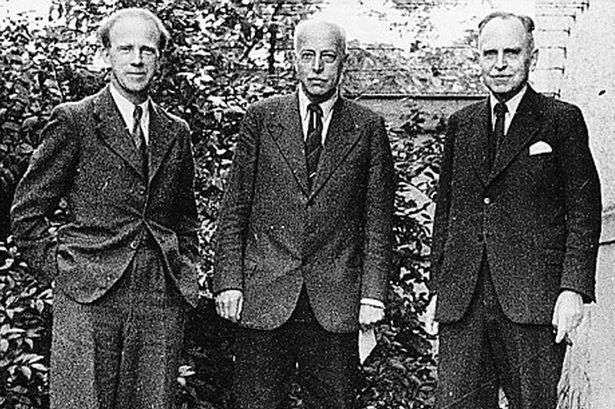
From left to right are Werner Heisenberg, Max von Laue, and Otto Hahn; Heisenberg and Hahn are members of the Uranium Club.
At that time, Germany was full of talents. Almost half of the best physicists in the world were in Germany, and their physics research level far exceeded that of other countries. Let me give you a few examples:
We all know that the basic principle of the atomic bomb is to use the huge energy released by the nuclear fission reaction to make the bomb, so who discovered this nuclear fission? German Otto Hahn with his assistant Strassmann. Hahn won the Nobel Prize in 1944;
The theoretical basis of the atomic bomb is quantum mechanics, and Planck, one of the earliest pioneers who created quantum mechanics , was also a German;
And Roentgen, who discovered X-rays , was also a German;
There are also Laue (Nobel Prize in Physics in 1914), Porter (Nobel Prize in Physics in 1954), Geiger (the inventor of the Geiger counter, who conducted alpha scattering experiments), Weizack, Barger, Dibner, Gerlach, Woz. But the most famous one is Heisenberg, one of the founders of quantum mechanics. He proposed the famous matrix algorithm in quantum mechanics at the age of 24 and won the Nobel Prize in Physics at the age of 31. He later became the core of Germany's development of the atomic bomb.
To talk about how powerful Heisenberg is, there is a line in the movie that is very classic. I may not remember it all, but the general idea is that someone said to Oppenheimer that the Germans were 12 months ahead of us. Oppenheimer Mo said it was not 12 months, but 18 months, because it took us 6 months to understand the meaning of that, and Heisenberg understood it in a day.
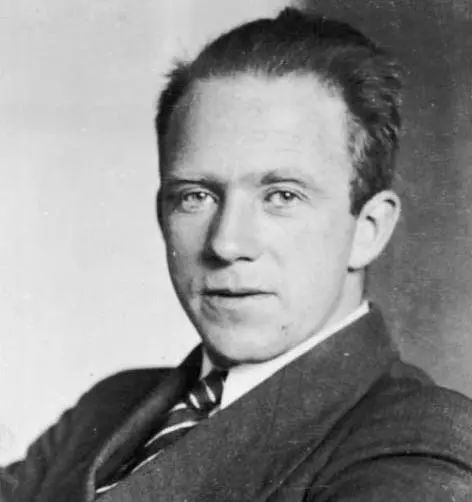
Werner Heisenberg; Image source: wikipedia
In short, at least before 1933, the world center of physics research was in Germany; and don’t forget, Germany quickly occupied Poland, Denmark, France, etc. after the start of World War II. These countries also have many well-known Most of the physicists were controlled by the Nazis before they had time to escape abroad. For example, the Curies who discovered polonium and radium also lived in France under Nazi rule. It can be seen that there was definitely no shortage of talents in Germany at that time. There is no shortage of raw materials. After Germany occupied Czechoslovakia, it took control of the largest uranium mine in the world at that time. So, did Hitler not want to engage in the development of the atomic bomb?
Of course not. Hitler's sense of smell was still very good. Although he was engaged in art before, he was always very enthusiastic about the application of this latest science in military affairs. He specially allocated a sum of money and appointed his right-hand man, Himmler, the leader of the SS. Responsible for the atomic bomb project. Himmler recruited Heisenberg to be in charge of the theoretical part, and Hahn was in charge of the experimental part. The combination of these two can be called a golden combination. This time was 1939, when Nazi Germany was in full swing. It stands to reason that in such a favorable time, place and people, there is no reason why the Germans could not produce an atomic bomb? But it just doesn't.
This is strange, and we inevitably have to ask why? After World War II, Heisenberg was imprisoned in Britain as a Nazi. After he returned to Germany, Heisenberg said this in public: Scientists led by him had realized that the atomic bomb would trigger fierce moral debates, but out of fear for the German motherland (not the Nazis) The love of the empire left them with no choice. Faced with the dilemma, they chose to be passive and delay again and again. They deliberately exaggerated the difficulty of building an atomic bomb to the German military, causing the project to be delayed again and again, and finally dropped. This way they could not only protect themselves, but also Do not help the evildoers. The implication is that if they support Hitler, hope that Nazi Germany will win, and devote themselves wholeheartedly to researching the atomic bomb, with the level of German scientists, is it not a matter of minutes to create an atomic bomb? However, due to moral considerations, they did not cooperate with Hitler wholeheartedly, so Germany did not build the atomic bomb.
Is Heisenberg's statement acceptable? Is he a conscientious scientist with a strong sense of moral justice, or a glib hypocrite? This matter has a special term in the history of science and World War II, called "Heisenberg Mystery" . For many years, there have been many academic papers, books, popular science books and even literary and artistic works trying to decipher this period of history. Koan. In particular, the play "Copenhagen", which is based on Heisenberg's trip to Copenhagen, the capital of Denmark, to meet his mentor Bohr in 1941, is the most famous. It shows this historical mystery and has been performed at home and abroad for a long time. .

"Copenhagen" stills.
In this literary and artistic work, the playwright implies that Bohr successfully persuaded Heisenberg not to help others, but literary and artistic works cannot be evidence of historical truth. Here is a brief interlude of Bohr’s legendary escape experience. Bohr was the most famous physicist in the world after Einstein, one of the founders of quantum mechanics, and the head of the Copenhagen School. How powerful is Bohr? There is also a line in the movie "Oppenheimer" to the effect that someone asked Oppenheimer why Bohr is so important. Oppenheimer asked: As far as you know, there are still more people in this world. Has anyone pointed out Einstein's academic errors?
Bohr's mother was Jewish, so the Nazis identified the Bohr family as Jewish. After Germany occupied Denmark, the Bohr family was in danger of being sent to a concentration camp at any time. The Danish resistance organization first transferred them to Sweden, but Sweden was not safe, so they had to continue fleeing. One day in early October 1943, Bohr climbed into the bomb bay of a bomber, flying from Sweden to England and passing through the skies of Norway occupied by the Nazis. Because he was not wearing a flying cap, Bohr could not hear the pilot's reminder. When the plane flew over Norway, in order to avoid Nazi anti-aircraft fire, the plane climbed to a higher altitude. As a result, Bohr fainted due to lack of oxygen at high altitudes. He didn't wake up until the plane flew over the Beihai sky and the altitude dropped. Later, Bohr went to the United States and met with General Grove and Oppenheimer, but he was not directly involved in the Manhattan Project. However, Oppenheimer said that it had always been a problem for them to have a neutron detonator device, but after Bohr briefly said a few words to himself, the problem was solved.
There is also a famous popular science book called "Brighter than a Thousand Suns - The Story of an Atomic Scientist", written by Robert Juncker of Germany. He defended Heisenberg a lot in this book, describing Heisenberg as a scientist with conscience and a sense of justice.
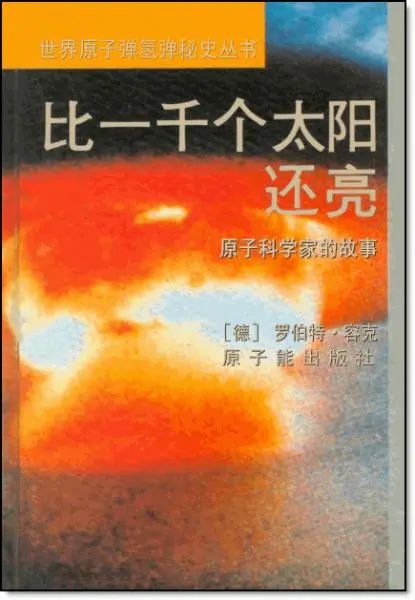
So is the Heisenberg mystery now solved?
For a question like this to judge a person's subjective consciousness, it is difficult to say that there will be a 100% accurate answer that will leave everyone speechless. However, there is actually a distinction between mainstream and non-mainstream perspectives in the history of science. The so-called mainstream refers to the view generally accepted by most experts in the history of science. On this issue, the mainstream view in the history of science is:
Heisenberg lied and was not as noble as he claimed to be.
So, what is the reason why Germany did not build an atomic bomb?
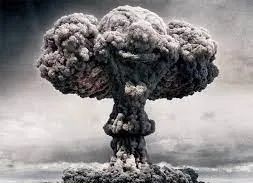
2. Why did Germany fail to build the atomic bomb?
As early as 1947, Dutch-born physicist Samuel Goudsmit published the first book about the "Uranium Club." He was the scientific director of the U.S. Army Special Forces' "Operation Alsos". His troops, along with the frontline combat troops, occupied the German Nuclear Research Center, seized the files and research materials there, and arrested and interrogated those working there. the scientist. The "Secret Reports" on the Uranium Club collected by Gausmit were sealed for many years.
The first person to make use of the "Secret Report" was the historian Mark Walker, who also visited the Karlsruhe Nuclear Research Center (the predecessor of the "Uranium Club", which the United States donated to in the 1970s). The Center returned archival materials seized during Operation Alsos). In 1990, Walker published his doctoral thesis, "The Uranium Machine—The Myth and Reality of the German Atomic Bomb." Like many other publications, the abstract of Walker's paper argued that physicists in Nazi Germany "clearly understood the principles of making nuclear weapons and their functions" and that the failure to develop the atomic bomb was mainly due to economic reasons. That is to say, Hitler did not give Heisenberg enough money, so he failed to build the atomic bomb. By the way, it cost the Americans almost $2 billion to build the atomic bomb.
In the movie "Oppenheimer", although this reason is not stated directly, there is a line that hints at the attitude of the screenwriter and director towards this issue. The general idea of this line is that Oppenheimer said to people: We have only one chance to defeat Heisenberg, and that is that Hitler despises the atomic bomb, because Hitler regards atomic physics as Jewish physics, which is very annoying.
However, the German physicist Manfred Popper, who once served as the chairman of the Karlsruhe Research Center, believes that it is either for economic reasons or for many technical reasons. For example, Heisenberg did not calculate the final result. The critical “critical mass” issue.
There is a lot of evidence raised by Popper, here is just one example:
After Germany surrendered, some of the most important members of the "Uranium Club" were detained at Landesz Farm in England for six months from early July 1945. The house was bugged and all conversations were taped. So we can still see today how German scientists reacted to the news that the United States had dropped the atomic bomb on Hiroshima. Bernstein was appalled at the low level of what they discussed: because by then, members of the Uranium Club still didn't understand the atomic bomb. In the recording, Heisenberg responded to Hahn's questions by admitting that he had never calculated the critical mass. He did the calculations on the spot at the farm, and on the first attempt, he made a serious mistake and found a critical mass of 1 ton of uranium-235. He even simply calculated the volume of the uranium ball based on the radius. In fact, his results all reached 13 tons. Two of the leading atomic bomb experts at the time, Edward Teller (often called the father of the hydrogen bomb) and Hans Bethe (head of the atomic bomb physics theory department of the Manhattan Project) obtained the information from wiretapping records. Conclusion: Heisenberg actually tried to calculate the critical mass for the first time, but he made the typical beginner's mistake. Bernstein believed that if Heisenberg calculated the critical mass for the second time, it would be impossible to make such a mistake a second time. The wiretap records are full of these physicists' speculations about the effective collision cross section required to hit uranium-235 with fast neutrons, which confirms their ignorance.
A week later, Heisenberg gave a memorable seminar on the physics of the atomic bomb. He made astonishing progress, correctly understanding many important issues, including the problem of the efficiency of the atomic bomb, although it still underestimated it. The wiretapping records of the farm strongly support the analysis results of the archival materials: Members of the "Uranium Club" are very unfamiliar with the working principle of nuclear explosions. Heisenberg's beginner's mistake is a strong proof that he never tried to calculate the critical mass, because at that time, he had no need to act, and from another perspective, if he had calculated it immediately The accurate critical mass is more evidence that he knew the critical mass before. On the other hand, his seminars showed that a week was enough to give German scientists a basic understanding of the physics of the atomic bomb. This refutes the idea that Heisenberg already knew about it but purposely didn't say it.
3. There is no truth or falsehood in opinions, and there is no right or wrong in facts.
People like to see a story full of dramatic tension, people also like a mystery that can never be solved, and people prefer a mysterious Heisenberg. Of course, people also like that this world would be better off with more heroes. But, to be honest, human emotions are really superfluous to science. When we want to explore the truth, it is best to put emotions aside temporarily. Only in this way can we discover the truth. Popper was German, and the subject of his research, Heisenberg, was also German. He had the right to choose not to destroy a German hero, but as a scientist's instinct, he chose to put aside his national feelings and discover the truth.
When we are looking for the truth, it is best to temporarily put aside our national sentiments. Pursuing the truth will not turn us into traitors or traitors.
Opinions are neither true nor false, and facts are neither right nor wrong.
What do you think?
(The author Wang Ji is a professional popular science writer. He is the author of books such as "The Shape of Time: A History of Relativity" and the screenwriter, director and main creator of the "Searching for Secrets of Nature" series of movies. The original title of this article is "In the movie "Oppenheimer" The Neglected Mystery of Science History", first published on the "Science Has a Story" WeChat official account, and The Paper is authorized by the author to reprint.)
